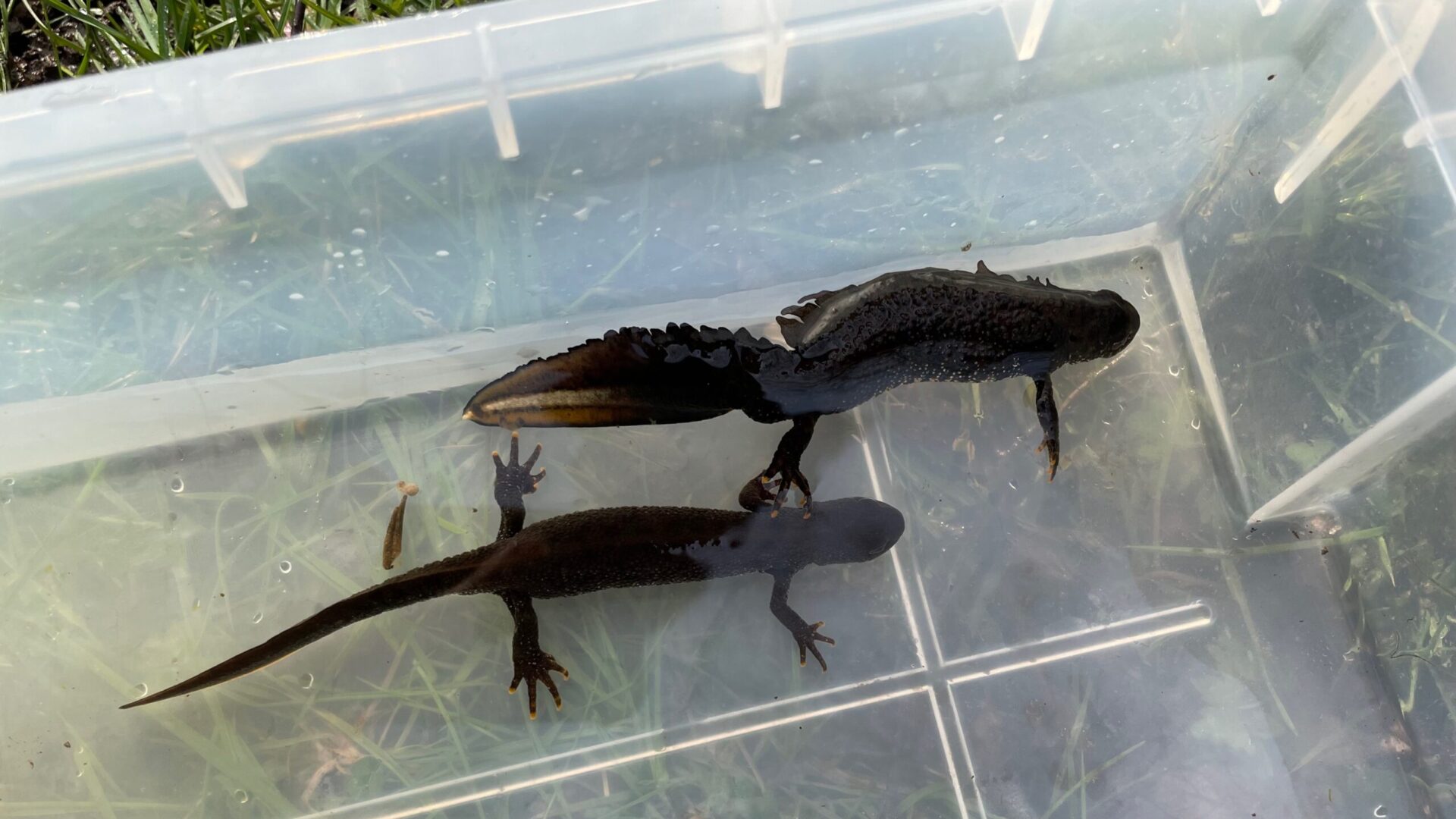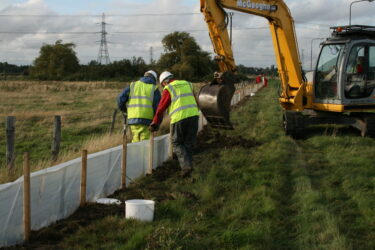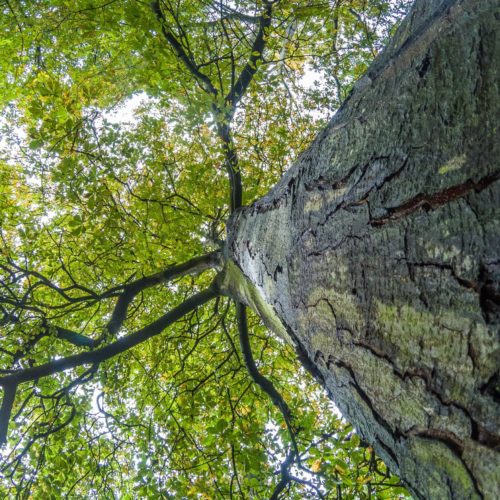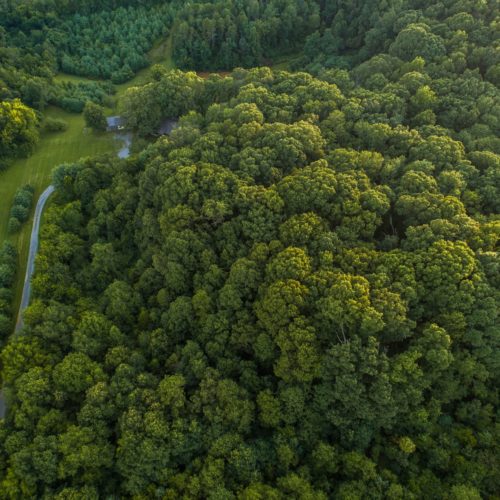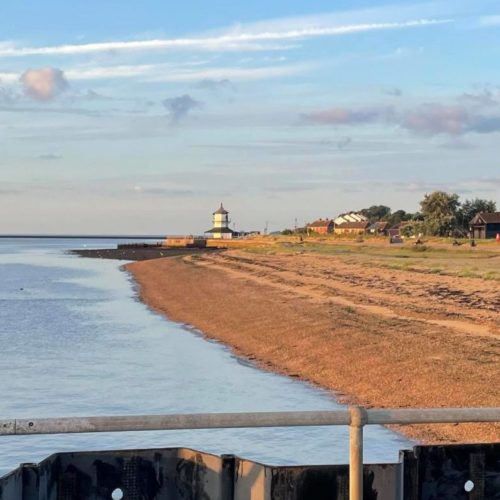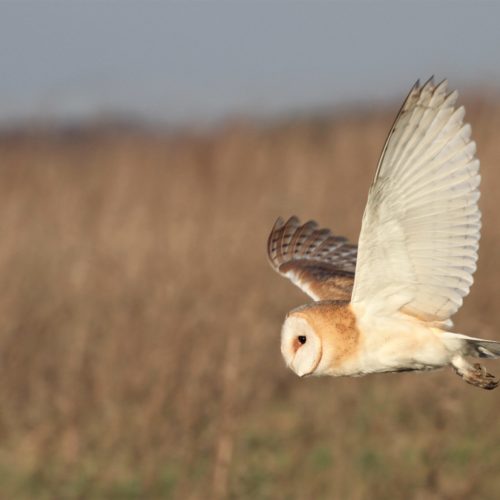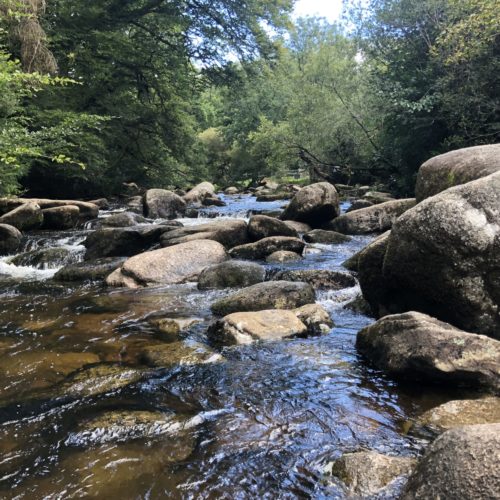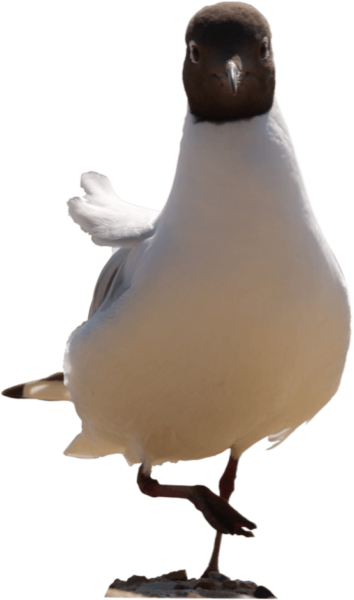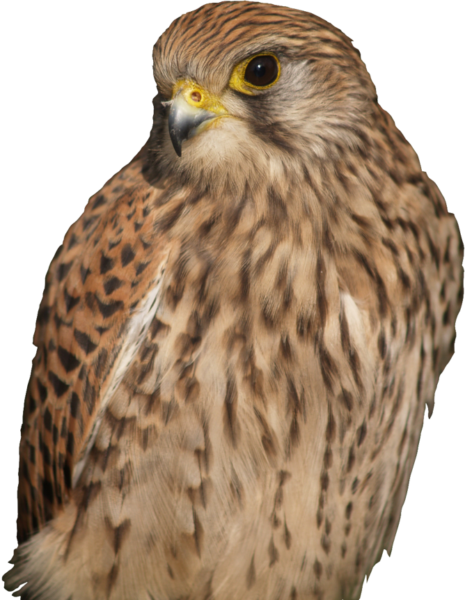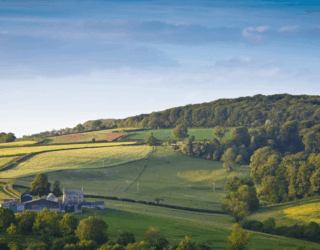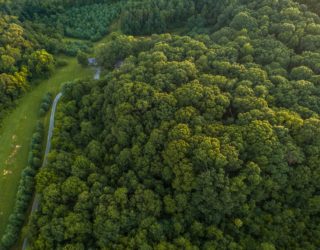Great crested newt: Identification and ecology
Britain is home to three native species of newt: the smooth newt, the palmate newt and the great crested newt (GCN). GCN are identified by their large size (up to 16cm) and warty skin, with males sporting their large iconic crest in the breeding season.
During the spring adult GCN seek out suitable ponds and ditches to breed and lay their eggs on aquatic vegetation. By the end of June, the optimal egg laying period is finished, and adult GCN will leave their breeding ponds to forage on land and hibernate over winter. Find out more about the lifecycle of great crested newt in our article: the private life of GCN.
Despite their wide range, they are vulnerable to habitat loss and fragmentation, the introduction of invasive non-native species (INNS) and water pollution.

How is great crested newt protected?
Great crested newt is protected under the Conservation of Habitats and Species Regulations 2017 (as amended) and the Wildlife and Countryside Act 1981 (as amended). Together these make it an offence to:
- deliberately capture, kill, disturb or injure GCN;
- damage or destroy a breeding or resting place;
- deliberately or carelessly obstruct access to their resting or sheltering place;
- possess, sell, control or transport live or dead GCN, or parts of them; and
- take GCN eggs.
Anyone found guilty of an offence, could receive an unlimited fine and up to 6 months in prison for each offence.
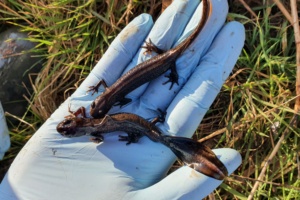
Where are great crested newts found?
GCN are widespread and found throughout much of lowland England, Wales and southern Scotland. They require suitable aquatic habitat with vegetation for egg laying and terrestrial habitat for foraging, shelter and hibernating. GCN has been recorded in a range of habitats including natural and artificial ponds, drainage ditches, marshes, reed-beds, grazed pastures, woodland, hedgerows and semi-natural grassland.
A preliminary ecological appraisal is undertaken to determine whether a site supports suitable habitat for great crested newt and other protected species. This involves:
- a desk study to identify any local records of GCN and whether there are standing waterbodies within 500m of the site; and
- a site visit to identify any habitat types on site suitable for GCN.
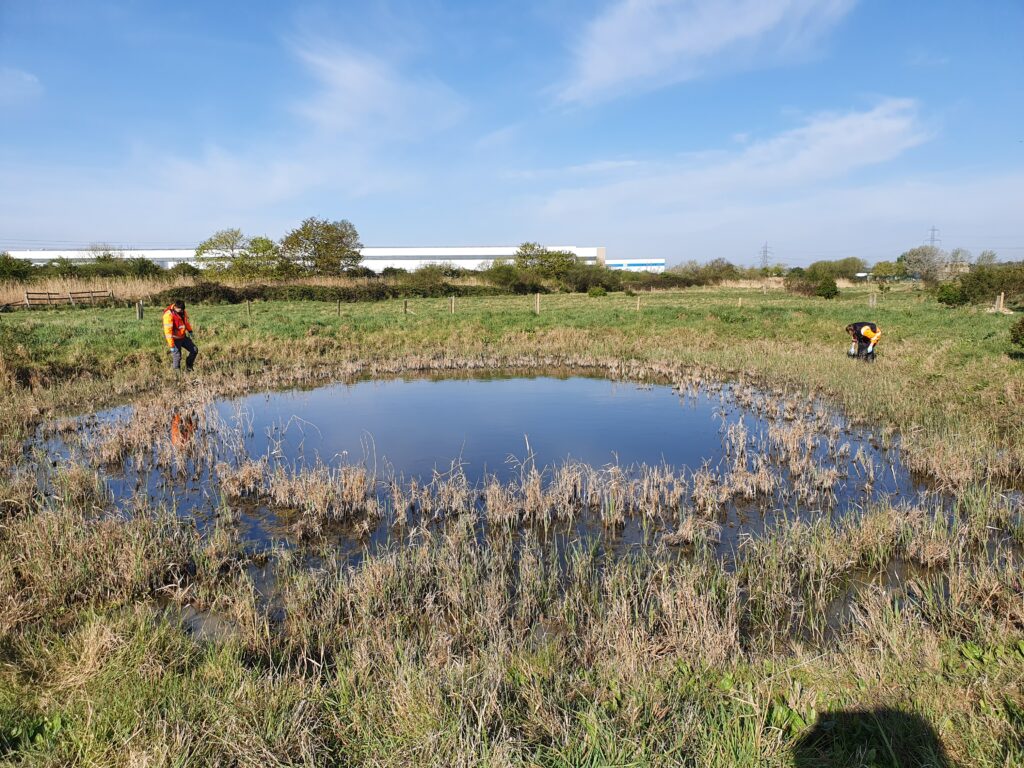
Will great crested newts impact my project?
Great crested newts should be considered in the project planning if:
- there are records of GCN within 1km of the site; or
- there’s a suitable standing waterbody for breeding GCN within 500m of the site; and
- there is suitable aquatic or terrestrial habitat on the site.
If activities from the proposed development could have any negative impact on GCN or their habitats a GCN survey and/or mitigation licence is needed for the works to continue lawfully.
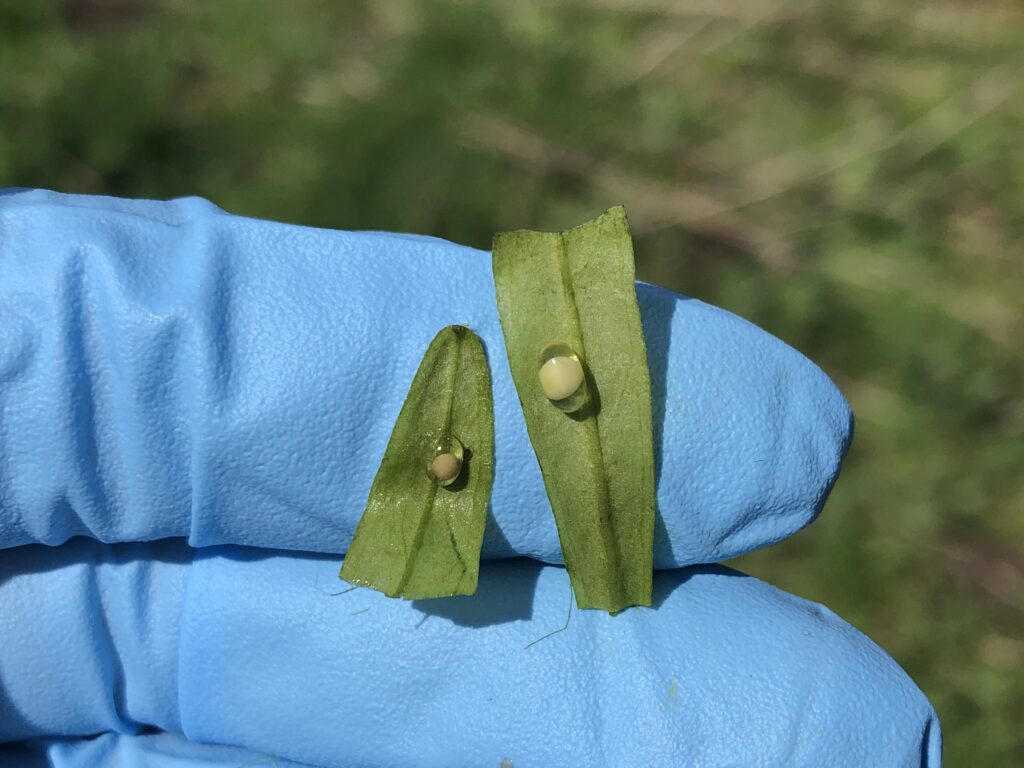
Survey techniques for great crested newt
Thomson ecologists are all trained and work under a professional survey licence following the latest good practice guidelines. Surveys for GCN include:
Screening
Screening is an initial assessment that can be undertaken during the Preliminary Ecological Appraisal to scope out any waterbodies that are unsuitable for GCN (e.g. filled in ponds, chlorinated swimming pools, flowing rivers or fishing lakes) or are separated from the work site by a major dispersal barrier.
Habitat suitability index (HSI) assessment for great crested newt
An HSI assessment can be completed at any time of year and is a useful tool to quantitatively assess how suitable a waterbody is to support GCN on a numeric scale. In general, waterbodies with high HSI scores are more likely to support GCN, and larger populations, than those with low scores. A HSI score cannot be used to indicate GCN presence or absence but can be useful in evaluating the general suitability of a waterbody, comparing ponds in different areas, evaluating the suitability of receptor ponds in a proposed mitigation scheme and identifying habitat management priorities.
Great crested newt presence/likely absence survey
All waterbodies not screened out in earlier assessments should be subject to a presence/likely absence survey. This can be in the form of Environmental DNA (eDNA) surveys or more conventional techniques such as bottle trapping, torching, egg searching, refugia checks or netting.
eDNA surveys can be used to detect great crested newt through sampling and testing pond water. Any newts using the ponds will shed genetic material, and this is tested for when the water samples are analysed in the lab. Utilising eDNA surveys can save time and survey effort by scoping out any ponds without GCN in the first instance. Results for eDNA surveys are only accepted by Natural England if the samples were collected between April 15th and June 30th.
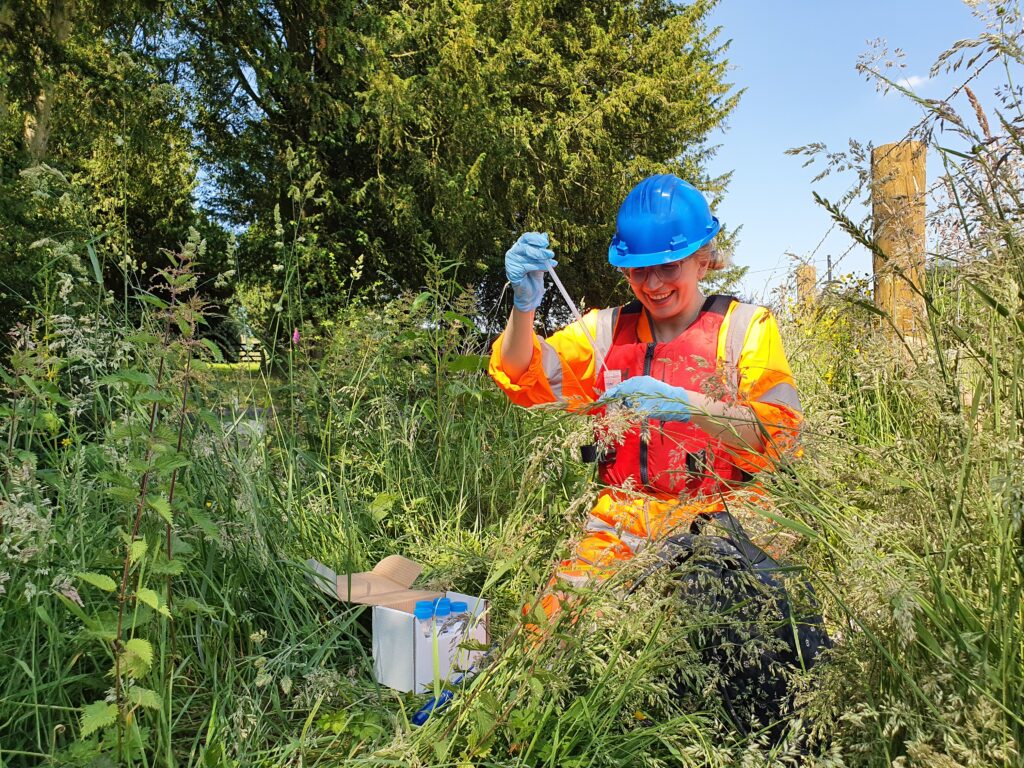
Population size class assessment
If presence/absence surveys denote the presence of GCN in a pond, further surveys may be required to establish the population size class. This is done by bottle trapping and torch light counts at night. Bottle trapping is a method that involves submerging bottles into the water to capture newts. The newts are caught in the traps and counted before being released back into the pond unharmed.
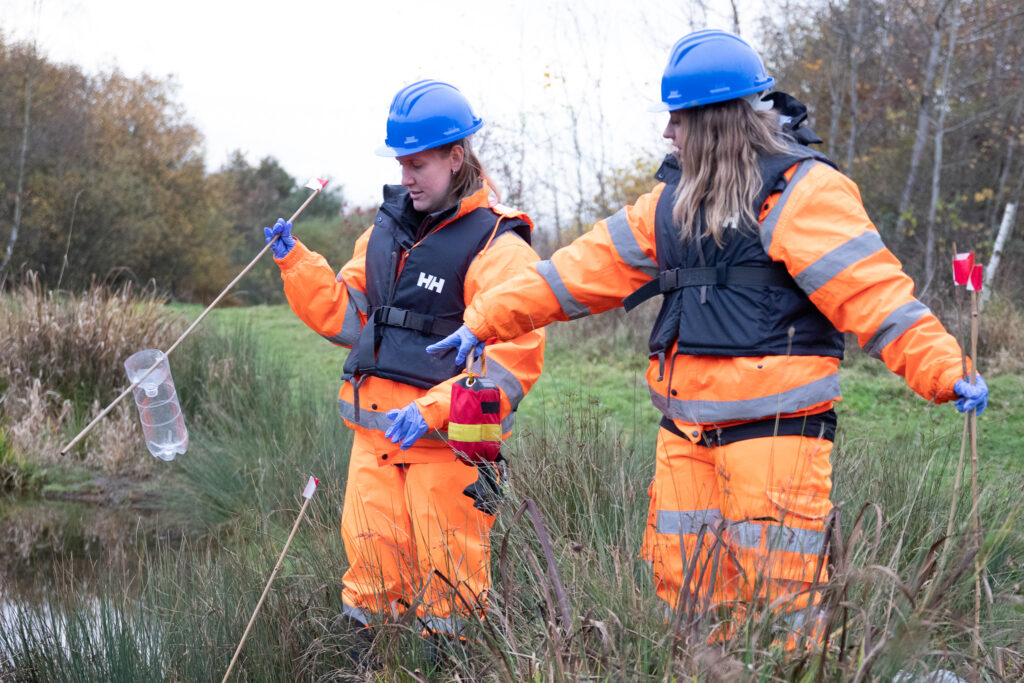
When can great crested newt surveys take place?
The survey window for GCN presence/likely absence surveys runs for a short time, coinciding with the optimal breeding season in spring. This means early planning is essential to avoid unexpected costs and delays.
Below is a summary of optimal GCN survey timings. We have produced a detailed ‘Species Survey Planner’ to help plan your ecological surveys for all protected species free to download.

Great crested newt reports
Our technical reports detail the results of our surveys to support planning applications or for ongoing monitoring. All our reports are accompanied by geospatial maps and quality checked by our in-house GIS and Mapping teams.
Great crested newt mitigation services
GCN mitigation is required to avoid, mitigate or compensate any negative impacts of development on GCN. Our ecological consultants and specialist contracting teams can recommend practical and cost effective solutions for GCN mitigation. This can involve:
- Avoid impacts through altering project design, work timings etc.
- In-situ translocation – trapping and relocating newts using pitfall trapping and drift fencing to a safe area on site.
- GCN exclusion – using exclusion fencing to prevent newts returning to the works site.
- Ex-situ translocation – trapping and relocating newts away from the site to an area that provides equivalent or better habitat.
- Create new ponds, hibernacula and/or habitat.
- Enhance or restore existing habitat on site.
- Post-development habitat management and site maintenance.
- Post-development population monitoring.
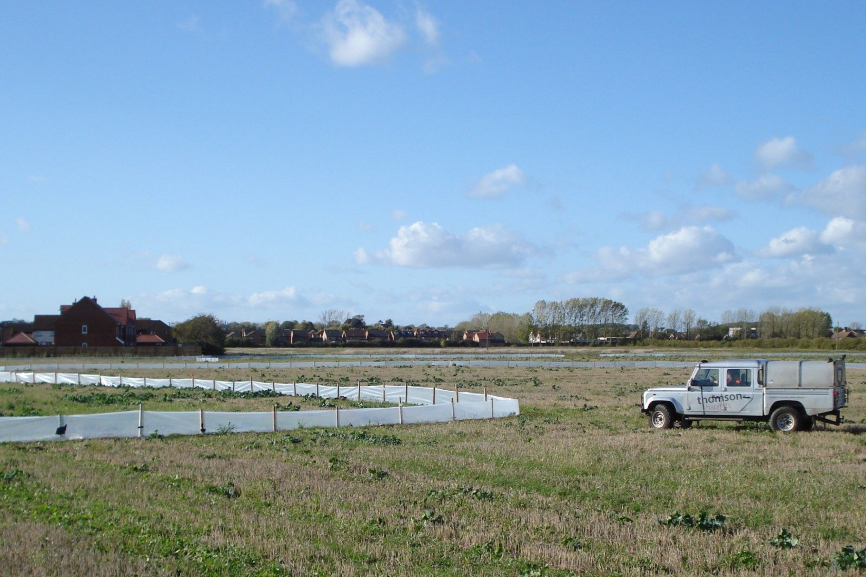
Licensing requirements for great crested newts
As a fully protected species, any unavoidable activity likely to impact GCN or their habitats will need a licence for the works to be undertaken lawfully. The licence enables derogation from the protection normally afforded to the species. There are three licensing options. Our ecological consultants can advise on the most suitable licence type based on your project.
- European Protected Species License (EPSL)
The traditional licence is appropriate for works of any size and duration, so long as mitigation or compensation is in place to conserve the favourable conservation status of GCN. To apply for this licence, detailed data showing GCN population size is required.
- Low Impact Class Licence (LICL)
LICL is a suitable alternative to the EPSL where the impacts to GCN are below a threshold detailed by Natural England.
- District Level License (DLL)
Projects can be registered under a DLL at any time of year and is now available in most areas of England. District level licenses are often cheaper than traditional EPSL and reduce the risk of project delays as GCN surveys and mitigation work to translocate newts is not always required.
Under this scheme, developers comply with their legal duty to protect GCN by paying conservation fees that are used to create and maintain off-site ponds and habitat in locations that will benefit the species for the foreseeable future.
Find out more about GCN licences in our article – Great crested newt licensing explained
Great crested newt – How Thomson can help
As experts in environmental compliance, we’re experienced in great crested newt surveys, licensing requirements and appropriate mitigation works. If you have a project that we can help with, get in touch with us to discuss your needs and the most cost effective and timely options available.
Contact us now